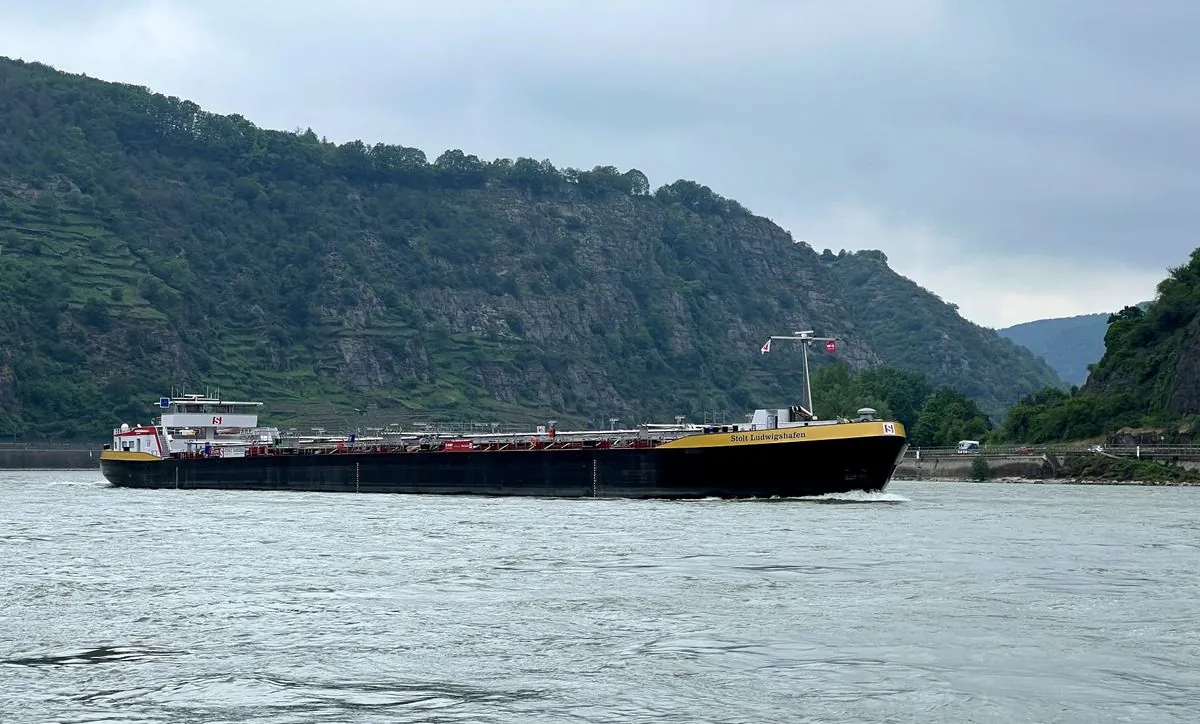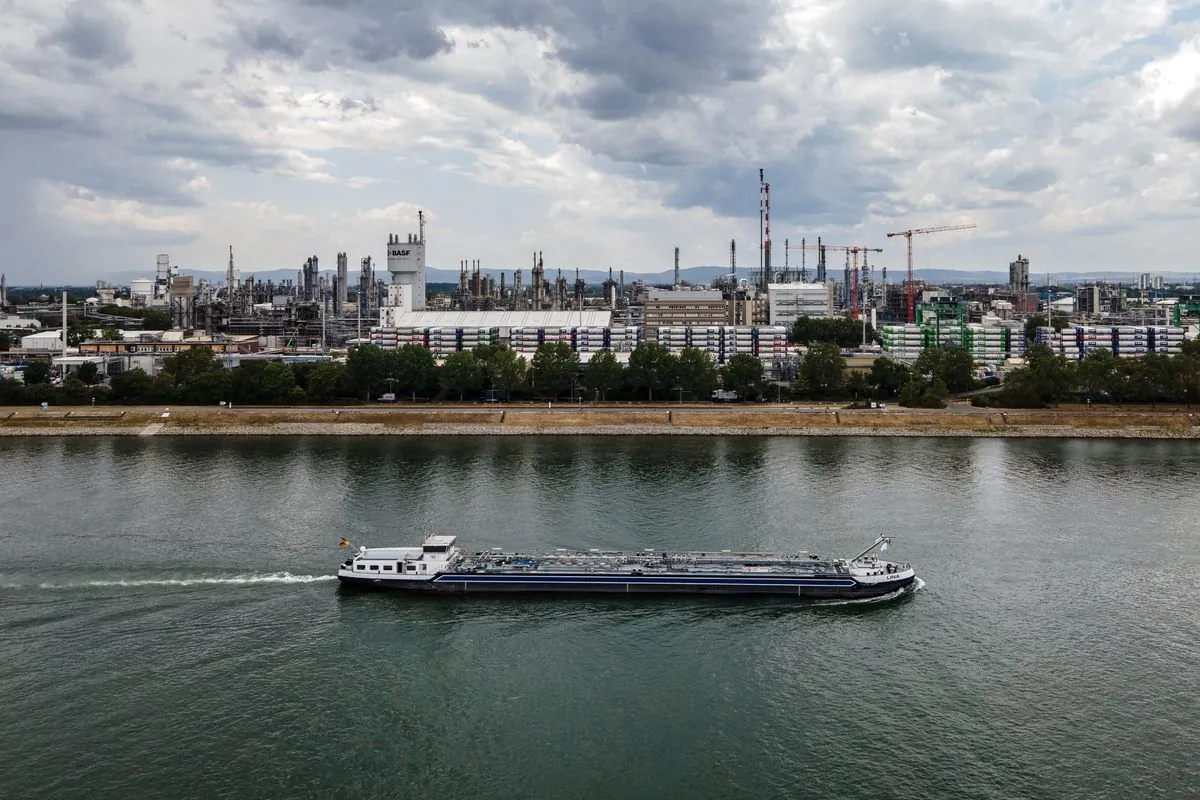Rhine Water Levels Drop, Impacting German Shipping Operations
Low water levels on Germany's Rhine River hinder cargo vessels, increasing shipping costs. Recent showers and forecasted rain may alleviate the situation, crucial for commodity transportation.

Recent dry weather has caused water levels on Germany's Rhine River to decrease, impacting shipping operations. Cargo vessels are unable to operate at full capacity due to shallow water conditions, affecting most of the river's course in Germany, including key areas such as Duisburg, Cologne, and the critical chokepoint of Kaub.
The Rhine, stretching 1,233 kilometers through six countries, has been a vital European trade route since Roman times. Its significance in modern commerce cannot be overstated, as it serves as a crucial artery for transporting a wide range of commodities, including grains, minerals, chemicals, coal, and oil products.
The current situation echoes the challenges faced in summer 2022, when a severe drought and heat wave led to unusually low water levels, causing supply bottlenecks and production problems for German companies. However, this summer had been different, with frequent rainfall maintaining high water levels until late August 2024.

The shallow water conditions have forced vessel operators to impose surcharges on freight rates, compensating for the inability to sail fully loaded. This increase in costs ultimately affects cargo owners and could potentially impact the prices of goods transported along the river.
Despite the current challenges, there is hope on the horizon. Recent showers in some river catchment areas and forecasted rain for the coming week are expected to raise water levels, potentially alleviating the situation. This development is crucial, as the Rhine's water is not only vital for shipping but also serves various other purposes, including cooling several nuclear power plants along its course.
The Rhine's importance extends beyond commerce. It is home to over 50 species of fish and boasts the Rhine Falls near Schaffhausen, the largest plain waterfall in Europe. The Middle Rhine Valley, a section of the river, is recognized as a UNESCO World Heritage site, highlighting its cultural and historical significance.
As climate change continues to impact weather patterns, the Rhine's water levels and flow patterns are expected to face significant changes in the coming decades. This underscores the need for adaptive strategies to ensure the river's continued viability as a major transportation route.
The current situation serves as a reminder of the delicate balance between nature and commerce, and the ongoing need to monitor and manage this crucial waterway. As stakeholders await the potential relief from forecasted rain, the importance of the Rhine in European trade and ecology remains undeniable.


































